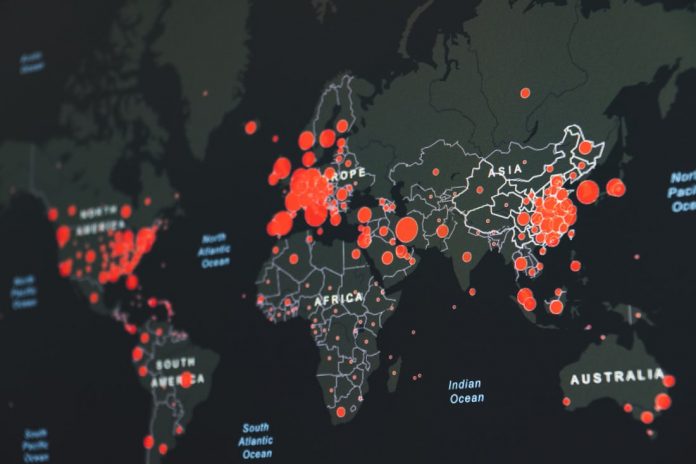The world is waging an unprecedented war against an invisible enemy, the coronavirus which causes the COVID-19 pandemic.
The effects of this war can be compared with those of a nuclear bomb. Already, 20,000 people have died worldwide and the total number of victims, whether deceased or hospitalised, can be expected to grow into the hundreds of thousands in coming months.
There’s none of the infrastructural damage that an actual nuclear bomb would cause. But a great deal of infrastructure has been made redundant because the people who usually operate it are confined to their homes and obliged to respect “social distancing”. This paralyses the economy and human society as a whole, in ways that are similar to the effect of a silent nuclear bomb. More than 2.5 billion people are now confined to their homes globally.
Worst of all, no-one can predict the future intensity or the duration of this war, nor the ultimate human and economic cost that it will wreak. Millions of deaths are possible – as with a nuclear bomb. There is also the danger of an economic slump on the scale of the Great Depression of the 1930s, the social and political consequences of which reverberated throughout the first half of the twentieth century.
The unknowns start with the new coronavirus which is behind the quickly expanding COVID-19 pandemic. The struggle against this uniquely lethal pandemic imposes a steep learning curve and demands strategies which must simultaneously take account of the following factors:
– the threat to life (mortality rates compared with apparently similar illnesses, necessity for intensive care for the most serious cases);
– contagion levels (ease and speed with which the illness spreads and the existence of a significant proportion of the population who can be infected without showing any symptoms but who can still infect those around them);
– lack of vaccination;
– absence of cure, and
– the existence of detection tests.
The mortality and contagion rates of COVID-19 mean that authorities are obliged to take concrete measures to quickly prevent the spread of the illness. To do nothing and wait for “herd immunity” to develop by itself would lead to an extremely high and unacceptable number of deaths and would cause in short order a catastrophic collapse of the hospital system. This passive “herd immunity” strategy was contemplated for a time in the United Kingdom and then quickly abandoned as too dangerous.
All the epidemiological considerations, especially the lack of vaccination, can lead to only two distinct strategies for public health, which can be combined: generalised confinement of the population and/or carrying out systematic testing.
The two strategies rest firstly on hygiene and immediate protection (frequent hand-washing, mask wearing, etc.) Beyond that common starting point, the strategies clearly differ in their effectiveness, as well as in their economic and social costs. Even after taking account of particular local conditions, experience in several Asian and European countries shows that confinement is less effective, while being harder to apply and ultimately more expensive, than testing.
Three Asian countries – South Korea, Taiwan and Singapore – have tested more quickly and intensively, and backed this up with immediate isolation of infected people, even if they don’t have any symptoms. These three countries have levels of economic development equivalent to western Europe and are in proximity to China, the epicentre of the pandemic. They have succeeded relatively quickly, and with lower numbers of victims, in slowing the epidemic, without such a draconian step as the confinement currently implemented in Europe.
Whichever strategy is used, the essential factor is the preparation, degree of reactivity and the responsibility of leaders. In China as in France, precious time was lost for differing reasons: lack of political transparency in the first, and lack of technical planning in the second. In both cases, the right measures were not taken quickly enough to prevent numerous deaths. These measures include:
– the supply of masks and other protective equipment in sufficient quantity;
– the massive supply of diagnostic tests;
– the provision of hospital beds equipped with respirators and ventilators; and
– the preparation and training of medical staff.
The gravest recklessness and irresponsibility have been shown by Cambodian Prime Minister Hun Sen, who failed to grasp the seriousness of COVID-19, publicly joking on February 18 that the pandemic would only arrive in Cambodia on February 31 – in other words never. The tragic consequences of this criminally cavalier attitude will soon reveal themselves.
The views and opinions expressed in this article are those of the author and do not necessarily reflect the official policy or position of The Geopolitics.

Sam Rainsy, Cambodia’s finance minister from 1993 to 1994, is the co-founder and acting leader of the opposition Cambodia National Rescue Party (CNRP).


